The content of the article
Cyanosis blue deserved a lot of other names, for example, Greek valerian, cyanosis azure or azure. The plant is herbaceous, belongs to the family Sinyukhov. It is considered one of the best honey plants. Reaches a height of 35 to 140 cm. Rhizome horizontal and unbranched, its length from 3 to 5 cm, adventitious roots are numerous, but very thin. The stem of this medicinal plant is single and hollow and only branchy at the top. Single-leaved and alternate leaves differ:
- lower, petiolate, have 15–27 lobes;
- upper sessile, pinnate and much smaller.
The leaves, usually offset to each other, are oblong and pointed in shape.In cyanosis, the blue palette of shades of large flowers is the most varied. Collected in paniculate inflorescences and located at the very end of the stem, the flowers are white, saturated blue, purple, purple. Represent a cup, which has five blades. The corolla is wide open and has an unusual five-blade limb. The stamens are also five, and the pistil is single, but it has an upper ovary and a three-part stigma.
In cyanosis after flowering fruits appear. This is a three-pin box resembling a ball. In it are hidden small, up to 3 mm, seeds. There are a lot of them, they are oblong, narrow-winged or curved, in color - black or brown.
The flowering time of the plant is June and July, but this time is quite short, lasts only 15 to 20 days. In addition, flowering and fruiting begins only in the second year of the plant's life, because in the first year it takes care of the rosette of leaves to appear. Fruits appear in August, less often - in September.
How to harvest the harvest
In order to collect cyanuha for therapeutic purposes, one should go to the forest or forest-steppe zone, on the edge or meadow, on the river or lake bank.The main thing for cyanosis is that the soil is rich in humus, and the place is damp and preferably swampy. It grows most often in groups, but there are also single plants that are lost among various shrubs. But the flower growers decided to tame the wild bluebush, and now it grows in flowerbeds, and gives good shoots when sowing and self-sowing, which can be planted.
In order to get a decent harvest of this plant, you need to pick up a plot in the valley, so that the groundwater is not at a great depth and could feed the roots. Cyanosis is very fond of moisture and endures cold, but may die due to strong heat, as well as if it is in the soil strongly acidic or with a high salt content.
In order for the harvest to be excellent, it is necessary to select only those seeds that have fully ripened for planting. This period can be determined by the color of the boxes - they then turn brown. To get the seeds, gently shake the box over a clean sheet of paper. Then harvested, lay larger and dried.
Sowing is done in an ordinary way. You can plant cyanuha:
- Before the winter season. Then the soil should be selected with a flat stretch, and non-floating.Before planting seeds will need to process the soil - to level and compact.
- In the spring, in the first sunny days. But before the seeds are placed in wet sand and left for 4 days. The plant during this time begins to germinate, and it is planted in the ground. If the air temperature reaches 18 - 20 degrees, the weather is good, it means that all favorable conditions are created for growth, and the first shoots appear after 5 days. Now we need weeding, watering and loosening. In cyanosis has a positive quality - it can self-reprove. So, if the planting was done too thickly, the plant itself will solve this problem. Spring will need to fertilize the soil between the rows.
In medicine, the root and rhizome are widely used, as they contain many useful substances. However, in everyday life, flowers and grass also found their application. The root system is harvested as a raw material, collecting in the fall, when the above-ground part of the plant is prepared for winter and gradually dies off. Before you dig up a plant, you need to remember that it is in the power of a person to allow the blue cyanoba to continue to multiply and give health, or die completely.
In the soil, after digging, small parts of the plant that have not yet matured, or a small percentage of each individual undergrowth, must be left for the plant to regain its strength and be able to restore the lost numbers. The roots are separated from the stem using a sharply sharpened cutting tool and then subjected to a water procedure. Roots washed under running cold water. If there are large rhizomes, it is desirable to cut them. Dry the entire crop in a cool, but dry place. Allowed to dry in the oven.
There are healing properties of raw materials for two years.
What nutrients does cyanosis blue contain
Healing ingredients mainly contain root and rhizomes. In them you can find:
Saponins, and in very large quantities. This means that cyanosis can regulate cholesterol metabolism, a beneficial effect on the urogenital and hormonal systems. These substances are irritating to the mucous membranes of many organs, such as the nose, eyes, mouth. Acting as an irritant, there is an increased secretion of all glands.This fact is positive for the bronchi, because the sputum is diluted and easier to remove from the body:
- resins;
- organic acids;
- a small percentage of essential and fatty oils;
- lipids;
- starch.
What diseases can cure valerian greek
Preparations with cyanosis have many strong effects on the human body. Are:
- sedatives, and it was found that the plant is 10 times more powerful than valerian by its effect;
- painkillers;
- anti-sclerotic, dramatically reducing the risk of atherosclerosis;
- expectorants.
Cyanosis helps to restore the required number of sperm, normalizes sexual function and improves the functioning of the hormonal system. Helps after being bitten by snakes.
In official medicine, cyanosis was recognized as a medicinal plant not so long ago, but traditional medicine has long used it, when it is necessary to help patients with such diseases as:
- ulcerative;
- atherosclerosis;
- hypertensive;
- mental or nervous disorders.
And herbalists to this list include such diseases:
- pulmonary tuberculosis;
- pneumonia;
- gynecological;
- hyperacid gastritis;
- fever;
- neurosis, hysteria;
- epilepsy.
Use cyanosis when treatment of fear, insomnia, seizures, and childhood spasmophilia is required.
How to be treated with cyanosis

As an expectorant. As an expectorant, the plant is used primarily. Therefore, there are many recipes that help to get rid of strong coughing attacks, remove sputum and prevent it from forming more. In this case, not only roots are used, but also grass, flowers.
- Take a tablespoon with the top shredded roots. This is about 7 - 8 gr. Pour 200 gr. boiling water, insist under the lid for several hours. Take 15 gr. after eating, a little heated. On the day - from 3 to 5 times.
- Take 3 grams. root and 8 gr. herbs, pour 250 gr. water and leave for a few hours to infuse the medicine. Drink well, at 15 grams. 3 - 5 times a day.
- 8 gr. flowers pour 200 gr. boiling water. After the remedy is infused, drink 15 g. three times a day.
- Drink 10 percent root infusion after a meal, measuring 30 - 50 drops. Repeat three times a day.
Atherosclerosis and neurosis. Due to the presence of saponins in cyanosis, it is possible to fight atherosclerosis and neurosis. To do this, prepare a decoction: 6 oz. root fill 200 gr. water and close tightly with a lid.When the decoction is infused in a few hours, it is filtered and drunk two hours after eating. The course of treatment is at least three weeks. On the day you should drink a decoction of 15 grams. 3 - 5 times a day.
Insomnia. In order for insomnia to recede, one could calm down and fall asleep calmly, using such a remedy:
- root cyanosis - 7 gr .;
- mint leaves - 20 gr .;
- hop cones - 10 gr.
All ingredients must be crushed. They are mixed, and one spoonful of the mixture is poured 0.5 liters of boiling water. It is necessary to insist 30 minutes. Drink 15 grams. a day 2 - 3 times. This broth can serve as a choleretic agent.
Tuberculosis. If hemoptysis occurs during tuberculosis, it can be stopped if you drink this medicine. 10 gr. roots pour 300 grams of water, boil for 5 minutes. You can take it like this:
- 5 - 6 times a day, 15 g;
- every three hours to 15 grams.
Blood. The plant has an effect on blood clotting, can normalize metabolic processes in a short time. The plant also exhibits bactericidal properties against coccal microflora.
Cyanosis has the properties to lower nervous irritability and lower blood pressure. Bactericidal properties were also found in this plant.To treat wounds, there are external remedies: a 20 percent tincture made in vegetable oil. Or use a tablespoon of roots, brewing it in 0.5 liters of boiling water.
Medicine from the roots and rhizomes is infusions or decoctions, dry extract tablets or powder.
Home-made powder from roots is easy and quick to make. It is necessary to grind the root, bringing to a powder. You need to drink it like this: 6 gr. powder pour 200 gr. boiling water, close tightly and leave in a warm place for a few hours. Then strain. It should be drunk only after eating three times a day. A single dose - a tablespoon.
Infusions from:
- Leaves - helps to relieve cramps, also relieves inflammation in colpitis and cervicitis - are treated in this case by douching.
- Flowers - used to remove the effects of fear and save the child from a nervous tic.
Restrictions on use: side effects
If there are problems with pressure or there is a possibility of increased thrombosis, it is better, before using cyanosis, to consult with your doctor.
Do not take drugs on the basis of cyanosis on an empty stomach, since the saponins in the plant will irritate the mucous membrane of the stomach and intestines, and their excess may have a toxic effect. Then vomiting may begin, diarrhea and dizziness begin, in rare cases - confusion.
Once in the blood, saponins become poisonous, as they provoke hemolysis of red blood cells. But when ingested, their toxicity is significantly reduced. And only correctly calculated dose will give health.
Video: useful properties and the use of blue cyanosis


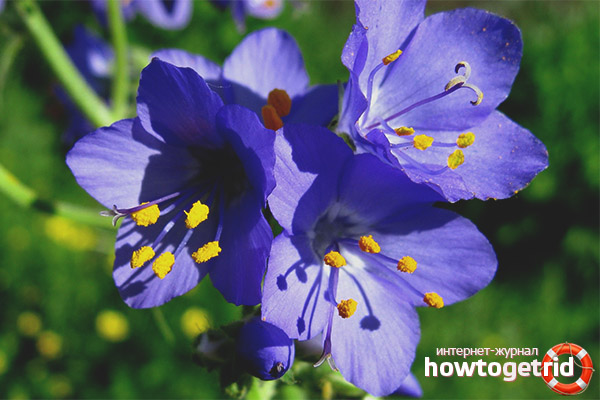


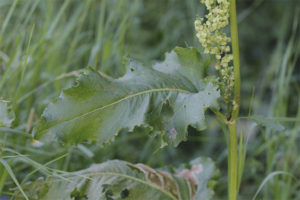
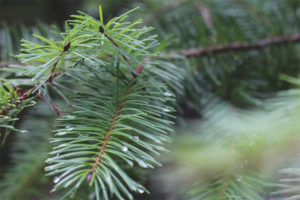


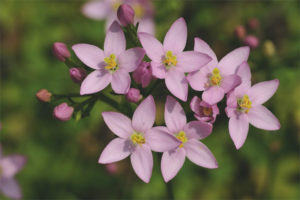
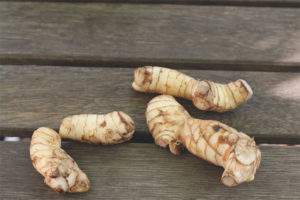
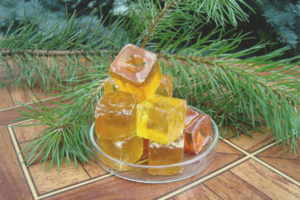
To send